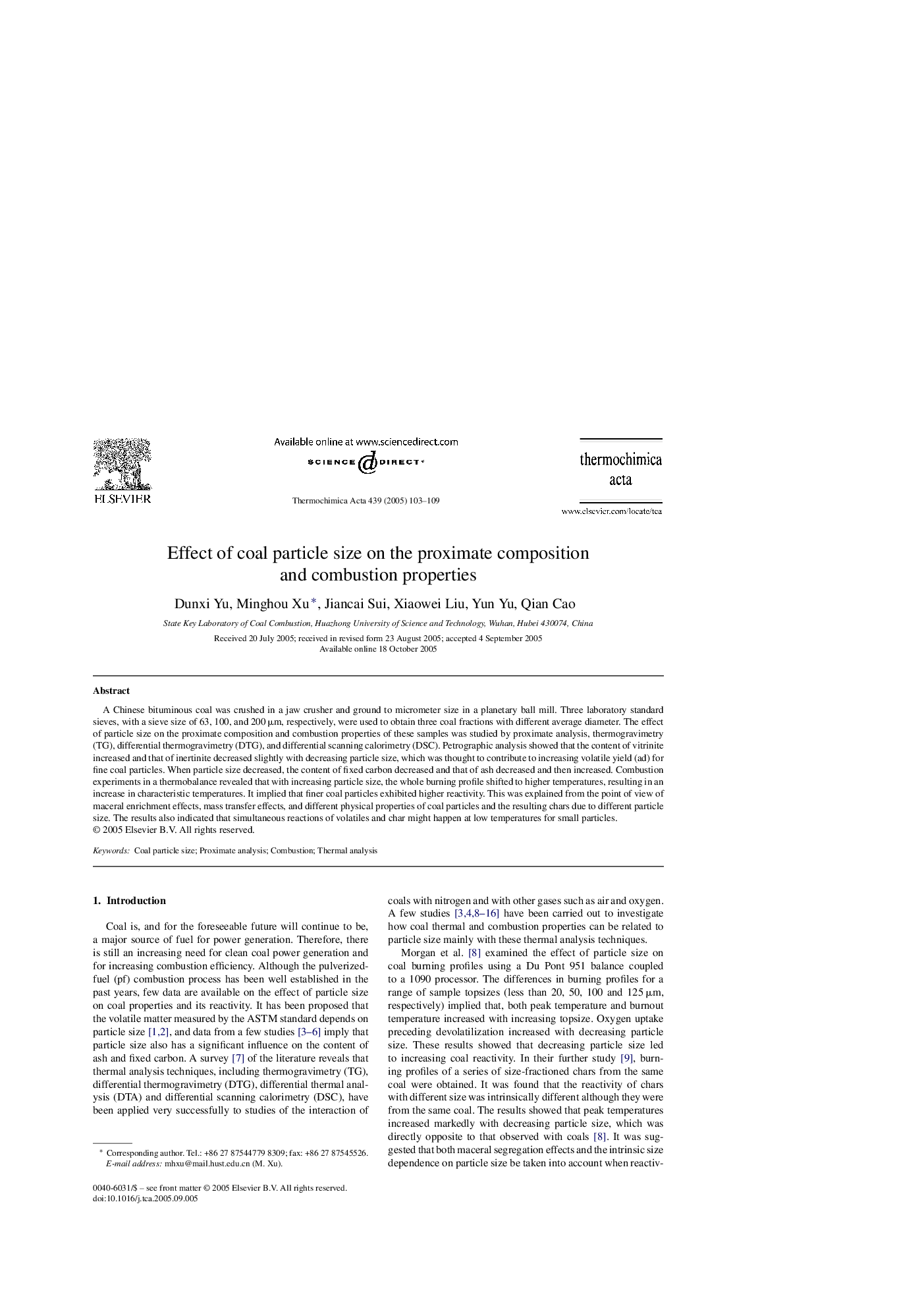| Article ID | Journal | Published Year | Pages | File Type |
|---|---|---|---|---|
| 9693908 | Thermochimica Acta | 2005 | 7 Pages |
Abstract
A Chinese bituminous coal was crushed in a jaw crusher and ground to micrometer size in a planetary ball mill. Three laboratory standard sieves, with a sieve size of 63, 100, and 200 μm, respectively, were used to obtain three coal fractions with different average diameter. The effect of particle size on the proximate composition and combustion properties of these samples was studied by proximate analysis, thermogravimetry (TG), differential thermogravimetry (DTG), and differential scanning calorimetry (DSC). Petrographic analysis showed that the content of vitrinite increased and that of inertinite decreased slightly with decreasing particle size, which was thought to contribute to increasing volatile yield (ad) for fine coal particles. When particle size decreased, the content of fixed carbon decreased and that of ash decreased and then increased. Combustion experiments in a thermobalance revealed that with increasing particle size, the whole burning profile shifted to higher temperatures, resulting in an increase in characteristic temperatures. It implied that finer coal particles exhibited higher reactivity. This was explained from the point of view of maceral enrichment effects, mass transfer effects, and different physical properties of coal particles and the resulting chars due to different particle size. The results also indicated that simultaneous reactions of volatiles and char might happen at low temperatures for small particles.
Related Topics
Physical Sciences and Engineering
Chemical Engineering
Fluid Flow and Transfer Processes
Authors
Dunxi Yu, Minghou Xu, Jiancai Sui, Xiaowei Liu, Yun Yu, Qian Cao,
